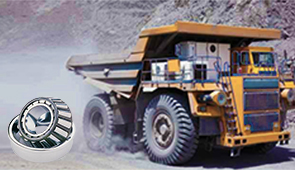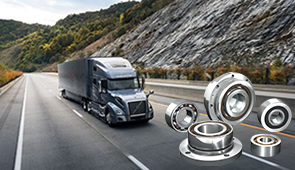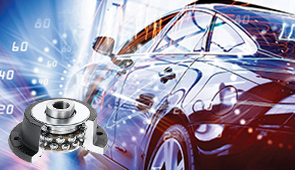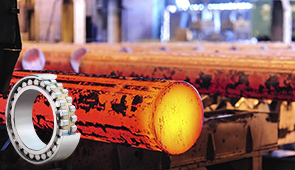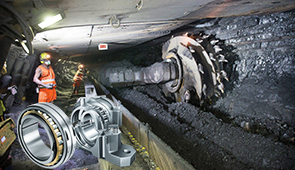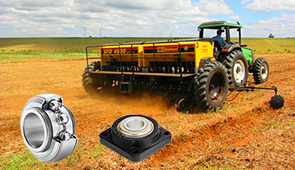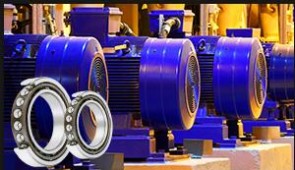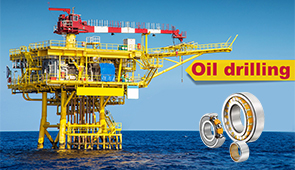Roller vs Ball Bearings: Key Differences and Advantages of Various Types
Bearings are a crucial component in machinery, designed to reduce friction between moving parts and ensure smooth operation under varying loads and speeds. Among the many types of bearings available, roller and ball bearings are two of the most widely used due to their versatility and performance characteristics. This article serves as a comprehensive guide to understanding the fundamental differences between roller and ball bearings, their distinct advantages, and the specific scenarios in which each type is best utilized. By exploring these key aspects, readers will gain valuable insights into selecting the appropriate bearing type for their applications and optimizing efficiency, durability, and load-bearing capacity in mechanical systems.
What are the types of ball bearings and their applications?
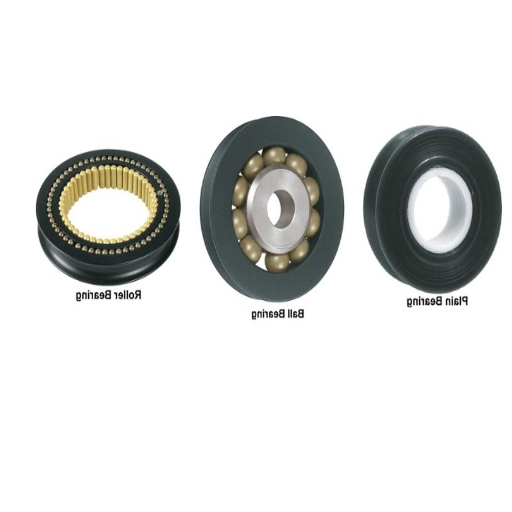
What are deep groove ball bearings used for?
Deep groove ball bearings find their primary application in high-speed operations where there is a necessity for low friction. They are designed to handle radial and axial loads, making them widely used in numerous mechanical and industrial components.
- Speed Capability: These bearings function with minimal resistance, therefore ideal for regions with high rotational speed.
- Load Capacity: Capable of bearing moderate radial and axial loads while maintaining operational stability.
- Durability: Made of hardened steel or ceramic materials, which provide wear resistance and give them a long operational life.
- Precision Classes: These bearings can be availed in precision grades of ABEC-1 to ABEC-9 according to the application’s performance and accuracy requirements.
Deep groove ball bearings are usually applied for most electric motors, components of automobiles, household appliances as well as machinery since their efficiency and reliability serve as a huge operational advantage.
When are angular contact ball bearings preferred?
Angular contact ball bearings are the types of bearings where an application meets a particular specification that requires the ability to withstand combined axial and radial loads at high speeds. These bearings possess raceways on their inner and outer rings that are tilted concerning one another in the direction of the axis of the bearing, thus making it possible for them to withstand and support great amounts of axial load in one direction.
- Contact Angle: The angle of the bearing races at which the greatest load can be applied without initiating wear. This typically ranges from 15˚ to 40˚ where greater axial load capacities can be applied optimally.
- Speed Capability: Advanced geometries and superior materials enable the bearings to withstand great rotational speeds.
- Load Ratings: Each specific operational goal has a tailored dynamic and static load capacity.
In this regard, the spindle machines tools, pumps, turbines, and other similar applications would validate the need for these bearing types to be employed in precision applications which require more strength, accuracy, and stability under varying loads.
What applications suit self-aligning ball bearings?
Self–aligning ball bearings are suitable for applications in which there is a possibility of misalignment of the shafts. I would suggest these bearings for agricultural machinery, conveyors, electric motors, and even fans. These bearings shine under these circumstances owing to their ability to self-tune for angular displacements which typically do not exceed 2-3 degrees. These bearings are also useful for applications where the load is moderate, the speed is relatively low, and radial forces are present.
- Misalignment Tolerance: 3 degrees is the maximum limit. Not detrimental to the overall operation.
- Load Capability: Acceptable ranges of Radial and axial load are moderate but strong enough to ensure dependability.
- Speed Range: Low to medium-speed operations are accepted with reliance on lubrication and design of the bearing.
- Durability: Service life is extended by specialized materials that overcome corrosion and wear.
These bearing properties make self-aligning ball bearings useful in systems where their function cannot be guaranteed due to accurate alignment within the design.
What are the types of roller bearings and their uses?
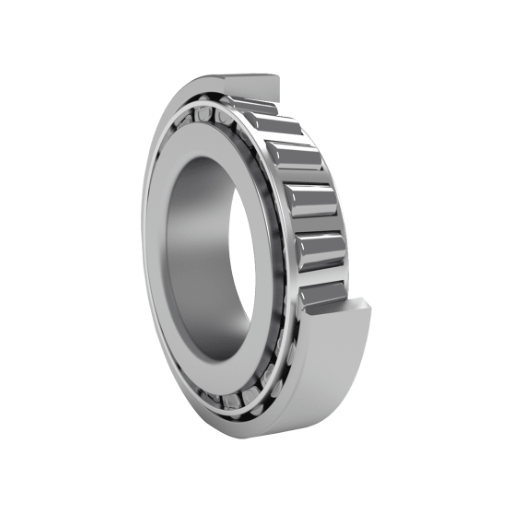
How are cylindrical roller bearings utilized?
Cylindrical roller bearings are used where high radial load and moderate speeds are required. I count on them to sustain heavy loads while keeping friction to a minimum, which is why they have become common in industrial gear, electric motors, and railroad applications. These bearings work best in cases where there are high axial rigidity requirements or where a constraining thermal expansion of the shaft is present.
- Load Capacity: Supports higher radial loads because of linear contact between rollers and raceways.
- Speed Limits: Achieves moderate to high speeds depending on the class of precision and lubrication.
- Axial Load Support: Limited or none unless special designs are used, e.g. NJ or NUP types.
- Operating Temperature: Usually works up to 120 °C and compatible materials and lubricants used provide heat stability.
Their versatility combined with power enables these devices for dependable performance for long periods under harsh operating conditions.
What are the benefits of tapered roller bearings?
The taper roller bearings have the property of accuracy and performance efficiency, especially in applications that need management of combined loads. From my point of view, these have the following key advantages:
- High load capacity: They must deal with both radial and axial loads effectively due to the construction that uses a taper, therefore providing stability under heavy loads.
- Alignment optimization: The construction reduces risks of misalignment, thus minimizing wear and tear which consequently increases operational lifetime.
- Versatile speed performance: Based on the type of lubrication and materials used, they can be dependable at many speeds.
- Thermal durability: Most of those within the taper roller bearing range are designed to operate with a temperature of 150°C, so when used with the right lubricants, performance in high temperatures is no problem.
Due to all these mentioned qualities, taper roller bearings are the most suitable ones for advanced engineering applications like automotive axles, industrial gearboxes, and heavy machinery.
When are needle roller bearings the best choice?
When it comes to needle roller bearings, I recommend them for applications where space constraints are critical, and high load-carrying capacity is required. These bearings are ideal for situations with oscillating motion or when radial space is limited, as their compact design enables a smaller cross-sectional area compared to other rolling bearings.
- Radial Loads: Relative to their size, needle roller bearings can tolerate bit radial loads which stems from possessing an increased number of rolling elements with extended contact surfaces.
- Compact Design: Their small footprint facilitates usage in tight regions. They can be installed into automotive transmissions, gearboxes, and portable machinery.
- Speed Range: Depending on the selection, e.g. cage-guided or full-complement, these bearings can withstand moderate to quite high rotating speeds.
- Operating Temperatures: Depending on lubricant compatibility and material composition, needle roller bearings are rated for quite a few temperatures. For example, they can withstand temperatures between -20°C to 120°C.
With a careful assessment of these factors against the work environment as well as load requirements, one can rely on needle roller bearings for an effective solution to his or her bearing needs.
How do ball bearings and roller bearings handle different loads?
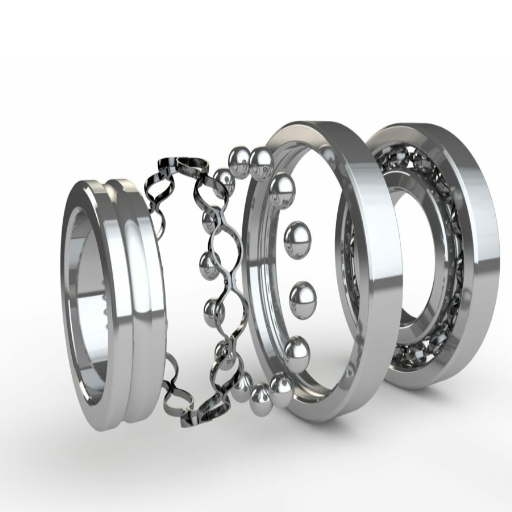
Which bearing type is better for radial loads?
In the comparison between ball bearings and roller bearings, the latter are usually preferred for handling radial loads. This can be attributed to roller bearings possessing an edge in the amount of radial load that can be handled due to the line contact of the rolling components of the roller bearing with the shaft.
- Surface Contact: Roller bearings employ line contact while ball bearings have point contact. This difference in contact surface limits the capacity of the ball bearings.
- Load Ratings: Roller bearings have significantly higher dynamic load ratings (C) and static (C₀) load ratings than ball bearings. This makes them more efficient for applications where radial forces are high.
- Deflection and Stiffness: Roller bearings tend to deflect less under a load which makes them more rigid. This is due to their shape and how the load is transferred.
Therefore, for applications with predominantly radial loads, roller bearings provide enhanced performance and durability, assuming that other factors like size, speed, and lubrication requirements align with operational needs.
How do ball and roller bearings perform under axial loads?
There is a difference in the performance of ball bearings as well as roller bearings under axial loads. It is my understanding that ball bearings perform surprisingly well under moderate axial loads. They have low friction and point contact between the balls and raceways which makes the operation smoother. On the straight road, their friction is low, but the axial load is limited when compared to roller bearings.
In contrast, roller bearings work well under axial loads as they have line contact and are designed to do so. An example of this is a tapered roller bearing. That increased load comes with the disadvantage of higher friction and the need for precise alignment.
- Contact Geometry: Ball bearings have point contact whereas the contact of roller bearings is line contact. This affects their load behavior.
- Axial Load Capacity: Standard ball bearings are weak when it comes to withstanding axial forces compared to tapered roller bearings.
- Friction Coefficient: Under light axial loads, ball bearings are more efficient due to low friction coefficient
- Alignment Sensitivity: Roller bearings demand stricter tolerances for alignment due to their contact mechanics and higher load capacities.
These distinctions should guide the choice of bearing type based on the specific axial load requirements of the application.
Which bearing type is ideal for combined radial and axial loads?
Tapered roller bearings usually have the upper hand when dealing with combined radial and axial loads. This is so because they can support large axial loads while simultaneously being subjected to large radial loads.
- Load Distribution: Tapered roller bearings are uniquely designed to enable the most effective distribution of the radial and axial loads to the rolling elements.
- Contact Angle: A larger angle of contact increases the ability of the bearing to bear axial loads.
- Durability: Because of their superior construction, tapered roller bearings perform well and remain reliable under extreme conditions, even when subjected to combined loads.
Notable as well is that bearing type selection should also include such factors as speed of operation, lubrication, and permissible level of misalignment to maximize performance within the system.
What are the speed capabilities of ball bearings vs roller bearings?
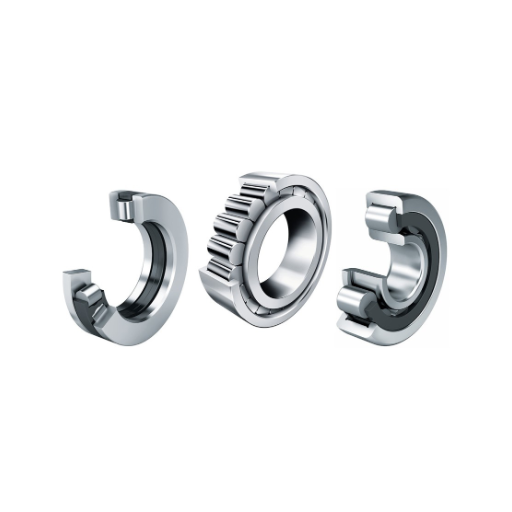
Why are ball bearings preferred for high-speed applications?
Friction is lessened and high rotational speeds are easily accommodated which is why ball bearings are a top choice for high-speed uses. The balls and raceways in ball bearings only have point contact which decreases the area of contact and reduces friction compared to line contact with roller bearings. This allows the ball bearings to perform better at a higher speed while generating less heat.
- Friction Coefficient: Ball bearings are characterized by a low coefficient of friction making them best suited for high-speed operations.
- Centripetal Force: Ball bearings are more lightweight compared to other forms, meaning they create less centrifugal forces which improves the stability at high speeds.
- Heat Management: Lessening friction also results in lesser heat accumulation, which is very important in preventing wear and maintaining high performance.
- Lubrication Requirements: Several forms of ball bearings are made to require low lubrication which increases their usage in high-speed bearings.
These benefits and features combine to give ample justification for the high-speed capabilities of electric motors, turbines, and precision machinery, all requiring ball bearings.
How do roller bearings perform at various speeds?
The behavior of roller bearings changes with the speed and operating conditions. Roller bearings, however, possess superior characteristics at lower speeds for they can bear substantial radial and thrust loads. This of course because of the greater contact area that the rollers have with the raceways. Their performance diminishes at high speeds owing to the increase in friction and heat generation.
- Load Capacity: Roller bearings are the most preferred types of bearings for bearing vertical loads as a result of their significantly enlarged load-carrying capability. They have increased their use In most heavy-duty applications.
- Friction Coefficient: The effectiveness of roller bearings is limited to moderate speeds. Above moderate speeds, rolling resistance and energy losses increase rapidly.
- Heat Dissipation: Roller bearings operate at lower efficiency rates since they take in a lot of energy. Because of the high friction encountered while rotating at high speeds, roller bearings get heated up extremely fast. This makes it essential to have effective cooling devices such as lubrication systems.
- Rotational Accuracy: Many roller bearing types are vulnerable to adequate levels of precision when measured against high-speed centrifugal forces imposed on the rollers.
When speed is of utmost importance, the solutions to these issues are frequently tapered or cylindrical roller bearings which have undergone optimized geometry and advanced lubricants in their design.
What are the advantages and disadvantages of ball bearings compared to roller bearings?
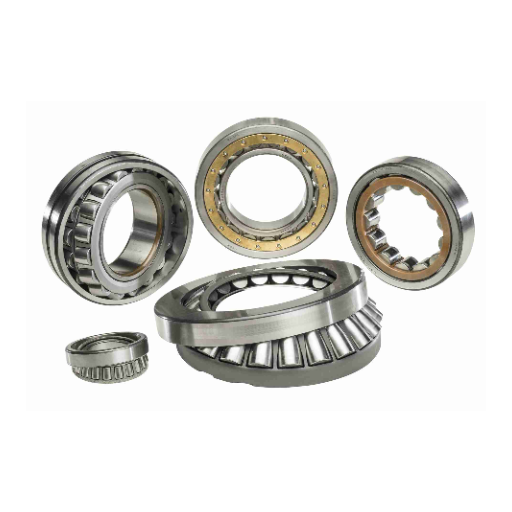
What are the pros and cons of ball bearings?
Benefits of Ball Bearings:
- Reduced Friction: Because of the point contact between balls and raceways, ball bearings have minimum rolling resistance, making them extremely efficient for low-friction applications.
- Rapid Rotational Speed: They function well at high speeds and produce less heat than roller bearings. Ball bearings are perfect for applications with rotational speeds greater than 10,000 RPM.
- Compact Scheme: Ball bearings are smaller and lighter than roller bearings, which makes them ideal for applications with space limitations.
- Low Maintenance: Because of their increased standardization and lower complexity, ball bearings are simple to install, replace, and maintain compared to numerous types of roller bearings.
Drawbacks of Ball Bearings:
- Reduced Load Capacity: Ball bearings have limited capabilities in sustaining significant radial and axial loads. For example, normal ball bearings can carry no more than 20% of their max rated load, which is quite low.
- Effect of Impact: Ball bearings are smoother than roller bearings, and as a result, the point contact design makes them more attractive to damage from shock or impact loads which might cause them to fail in premature conditions.
- Loss of durability from misalignment: In comparison to roller bearings, ball bearings are less forgiving to misalignments. Stress concentrations arise from even small deviations which in turn leads to wear and tear or performance complications.
- Dependency on lubrication: For use at high speeds, reliable operation requires proper thermal and mechanical lubrication conditions. With proper lubrication absent, increased friction, heating, and failure are possible.
By balancing these advantages and disadvantages, ball bearings are often preferred for applications emphasizing low friction, high speed, and compactness, such as electric motors, aerospace equipment, and precision instruments. However, their limitations in handling heavy loads or misalignment make them less ideal for heavy-duty machinery or applications with significant shock impacts.
What are the advantages and limitations of roller bearings?
This type of bearing is best suited for applications that support high radial loads because of their contact area which is rolling elements. Roller bearings are also beneficial because they relieve stress on the surface, lowering wear and increasing the load that can be supported. Additionally, they are suitable for heavy machinery such as cranes, conveyors, and industrial presses because roller bearings have lower deformation under load. Also, the ability to bear moderate misalignments, such as those with spherical roller bearings, makes them diverse in applications where alignment is difficult.
With that said, it is important to highlight the disadvantages of roller bearings. When compared to ball bearings, roller bearings expose higher levels of friction. This results in higher rotational speeds contributing to greater heat generation and a loss in energy. Because of the previously mentioned reasons, roller bearings are ill-fitted for high-speed applications. Another downside to roller bearings is that they are typically bulky and are ill-fitted for compact environments compared to ball bearings.
- Load Capacity: High radial load capacity due to line contact between rolling elements and raceways.
- Speed Limit: Typically capable of operating at lower maximum rotational speeds compared to ball bearings, with precise limits depending on the type.
Spherical roller bearings possess the capability of accommodating misalignment up to close to 3 degrees during shaft operations. In addition, most people know that the friction coefficient in spherical bearings is greater than in ball bearings, which causes a reduction in efficiency when high speeds are achieved. In the end, the decision as to whether to select ball bearings or roller bearings requires special consideration of all load cases, operating speeds, shaft alignment types, and space available for installation in the application.
Frequently Asked Questions (FAQs)
Q: What is the main difference between ball bearings and roller bearings?
A: The main difference between ball bearings and roller bearings lies in their contact geometry. Ball bearings use spherical balls, while roller bearings use cylindrical, tapered, or spherical rollers. This difference affects their load-bearing capacity, speed capabilities, and suitability for specific applications.
Q: How do roller bearings vs ball bearings compare in terms of load capacity?
A: Roller bearings generally have a higher load capacity compared to ball bearings due to their larger contact area with the bearing races. This allows roller bearings to handle heavier loads and makes them ideal for applications requiring substantial weight support. Ball bearings, while capable of handling moderate loads, are better suited for lighter applications where speed is a priority.
Q: What are the advantages of ball bearings over roller bearings?
A: Ball bearings offer several advantages over roller bearings, including 1. Lower friction, allowing for higher rotational speeds 2. Better performance in applications with light to moderate loads 3. Ability to handle both radial and axial loads (thrust bearings) 4. Generally quieter operation 5. Lower manufacturing costs in most cases These characteristics make ball bearings ideal for applications requiring high speed and precision.
Q: In what applications are roller bearings commonly used?
A: Roller bearings are commonly used in applications that require high load capacity and durability. Some application examples include: 1. Heavy machinery and industrial equipment 2. Automotive transmissions and wheel hubs 3. Construction equipment 4. Mining machinery 5. Railroad car wheels 6. Conveyor systems 7. Wind turbines These applications benefit from roller bearings’ ability to handle heavier loads and their robust design.
Q: What is a spherical roller bearing, and how does it differ from other roller bearings?
A: A spherical roller bearing is a type of roller bearing that uses barrel-shaped rollers. The inner ring has a spherical outer surface, allowing the bearing to accommodate misalignment. Spherical roller bearings differ from other roller bearings in their ability to handle both radial and axial loads while also compensating for shaft deflections or misalignments. They are particularly useful in applications where shaft bending or housing deformation may occur.
Q: How do ball bearings and roller bearings compare in terms of speed capabilities?
A: Ball bearings generally offer higher speed capabilities compared to roller bearings. The spherical shape of the balls in ball bearings results in less friction and heat generation, allowing for higher rotational speeds. Roller bearings, while capable of moderate speeds, are typically limited to lower speeds than ball bearings due to their larger contact area and increased friction. The specific speed limits depend on the bearing design, size, and lubrication.
Q: What factors should be considered when choosing between ball bearings and roller bearings for a specific application?
A: When selecting between ball bearings and roller bearings, consider the following factors: 1. Load requirements (radial and axial) 2. Operating speed 3. Space constraints 4. Misalignment tolerance 5. Environmental conditions 6. Noise and vibration requirements 7. Cost considerations 8. Maintenance needs Evaluating these factors will help determine whether ball or roller bearings are more suitable for your specific application.
Q: Are there hybrid designs that combine features of both ball and roller bearings?
A: Yes, there are hybrid bearing designs that combine features of both ball and roller bearings. One example is the cylindrical roller bearing with ball thrust bearings, which uses cylindrical rollers for radial loads and ball bearings for axial loads. Another example is the angular contact ball bearing, which can handle both radial and axial loads like some roller bearings. These hybrid designs aim to leverage the advantages of both types of bearings for specific application requirements.
UCTH213-40J-300 with Setscrew(inch)
CNSORDERNO: Normal-duty(2)
TOGN: UCTH213-40J-300
SDI: B-R1/8
SD: 2 1/2
UCTH212-39J-300 with Setscrew(inch)
CNSORDERNO: Normal-duty(2)
TOGN: UCTH212-39J-300
SDI: B-R1/8
SD: 2 7/16
UCTH212-38J-300 with Setscrew(inch)
CNSORDERNO: Normal-duty(2)
TOGN: UCTH212-38J-300
SDI: B-R1/8
SD: 2 3/8
UCTH212-36J-300 with Setscrew(inch)
CNSORDERNO: Normal-duty(2)
TOGN: UCTH212-36J-300
SDI: B-R1/8
SD: 2 1/4
UCTH211-35J-300 with Setscrew(inch)
CNSORDERNO: Normal-duty(2)
TOGN: UCTH211-35J-300
SDI: B-R1/8
SD: 2 3/16
UCTH211-34J-300 with Setscrew(inch)
CNSORDERNO: Normal-duty(2)
TOGN: UCTH211-34J-300
SDI: B-R1/8
SD: 2 1/8









